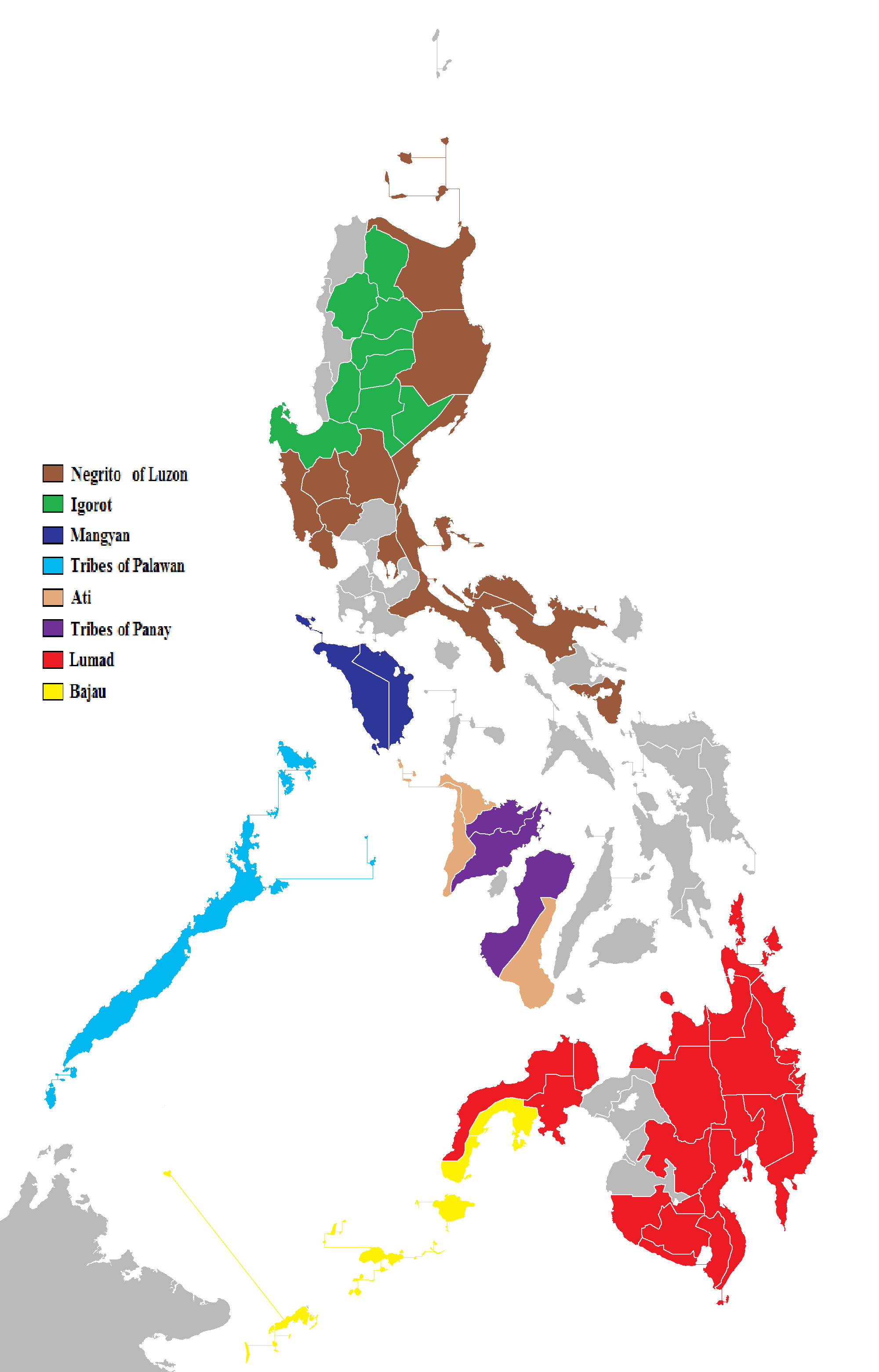|
Katarungang Pambarangay
Katarungang Pambarangay, or the Barangay Justice System is a local justice system in the Philippines. It is operated by the smallest of the local government units, the barangay, and is overseen by the barangay captain, the highest elected official of the barangay and its executive. The barangay captain sits on the Lupon Tagapamayapa along with other barangay residents, which is the committee that decides disputes and other matters. They do not constitute a court as they do not have judicial powers. The system exists to help decongest the regular courts and works mostly as "alternative, community-based mechanism for dispute resolution of conflicts," also described as a "compulsory mediation process at the village level." Throughout the Philippines the Barangay Justice Systems handles thousands of cases a year. Since officials have more flexibility in decision-making, including from complex evidence rules, and receive some resources from government, the courts are more numerous an ... [...More Info...] [...Related Items...] OR: [Wikipedia] [Google] [Baidu] |
Philippines
The Philippines (; fil, Pilipinas, links=no), officially the Republic of the Philippines ( fil, Republika ng Pilipinas, links=no), * bik, Republika kan Filipinas * ceb, Republika sa Pilipinas * cbk, República de Filipinas * hil, Republika sang Filipinas * ibg, Republika nat Filipinas * ilo, Republika ti Filipinas * ivv, Republika nu Filipinas * pam, Republika ning Filipinas * krj, Republika kang Pilipinas * mdh, Republika nu Pilipinas * mrw, Republika a Pilipinas * pag, Republika na Filipinas * xsb, Republika nin Pilipinas * sgd, Republika nan Pilipinas * tgl, Republika ng Pilipinas * tsg, Republika sin Pilipinas * war, Republika han Pilipinas * yka, Republika si Pilipinas In the recognized optional languages of the Philippines: * es, República de las Filipinas * ar, جمهورية الفلبين, Jumhūriyyat al-Filibbīn is an archipelagic country in Southeast Asia. It is situated in the western Pacific Ocean and consists of around 7,641 islands t ... [...More Info...] [...Related Items...] OR: [Wikipedia] [Google] [Baidu] |
Local Government Code
Codification of laws is a common practice in the Philippines. Many general areas of substantive law, such as criminal law, civil law and labor law are governed by legal codes. Tradition of codification Codification is predominant in countries that adhere to the legal system of civil law. Spain, a civil law country, introduced the practice of codification in the Philippines, which it had colonized beginning in the late 16th century. Among the codes that Spain enforced in the Philippines were the Spanish Civil Code and the Penal Code. The practice of codification was retained during the period of American colonial period, even though the United States was a common law jurisdiction. However, during that same period, many common law principles found their way into the legal system by way of legislation and by judicial pronouncements. Judicial precedents of the Philippine Supreme Court were accepted as binding, a practice more attuned to common law jurisdictions. Eventually, the ... [...More Info...] [...Related Items...] OR: [Wikipedia] [Google] [Baidu] |
Barangays Of The Philippines
A barangay (; abbreviated as Brgy. or Bgy.), historically referred to as barrio (abbreviated as Bo.), is the smallest administrative division in the Philippines and is the native Filipino term for a village, district, or ward. In metropolitan areas, the term often refers to an inner city neighborhood, a suburb, or a suburban neighborhood or even a borough. The word ''barangay'' originated from ''balangay'', a type of boat used by a group of Austronesian peoples when they migrated to the Philippines. Municipalities and cities in the Philippines are politically subdivided into barangays, with the exception of the municipalities of Adams in Ilocos Norte and Kalayaan in Palawan, with each containing a single barangay. Barangays are sometimes informally subdivided into smaller areas called '' purok'' ( en, "zone"), or barangay zones consisting of a cluster of houses for organizational purposes, and ''sitios'', which are territorial enclaves—usually rural—far from the barangay ... [...More Info...] [...Related Items...] OR: [Wikipedia] [Google] [Baidu] |
Department Of The Interior And Local Government
The Department of the Interior and Local Government ( fil, Kagawaran ng Interyor at Pamahalaang Lokal), abbreviated as DILG, is the executive department of the Philippine government responsible for promoting peace and order, ensuring public safety and strengthening local government capability aimed towards the effective delivery of basic services to the citizenry. The department is currently led by the secretary of the interior and local government, nominated by the president of the Philippines and confirmed by the Commission on Appointments. The secretary is a member of the Cabinet. The current secretary of the interior and local government is Sec. Benjamin Abalos Jr. History The DILG traces its roots in the Tejeros Convention of March 22, 1897. As the Department of the Interior, it was among the first Cabinet positions of the proposed revolutionary Philippine government, wherein Gen. Emilio Aguinaldo was elected president. The leader of Katipunan's Magdiwang faction, Andres ... [...More Info...] [...Related Items...] OR: [Wikipedia] [Google] [Baidu] |
Local Government In The Philippines
In the Philippines, local government is divided into three levels: Provinces of the Philippines, provinces and Cities of the Philippines, independent cities, component cities and Municipalities of the Philippines, municipalities, and barangays, all of which are collectively known as local government units (LGUs). In one area, above provinces and independent cities, is an Autonomous regions of the Philippines, autonomous region, the Bangsamoro Autonomous Region in Muslim Mindanao. Below barangays in some cities and municipalities are sitios and puroks. All of these, with the exception of sitios and puroks, elect their own executive branch, executives and legislatures. Sitios and puroks are often but not necessarily led by an elected barangay councilor. Provinces and independent cities are organized into Regions of the Philippines, national government regions but those are administrative regions and not separately governed areas with their own elected governments. According to th ... [...More Info...] [...Related Items...] OR: [Wikipedia] [Google] [Baidu] |
Philippine National Police
The Philippine National Police ( fil, Pambansang Pulisya ng Pilipinas, acronymed as PNP) is the armed national police force in the Philippines. Its national headquarters is located at Camp Crame in Bagong Lipunan ng Crame, Quezon City. Currently, it has approximately 220,000 personnel to police a population in excess of 100 million. The agency is administered and controlled by the National Police Commission and is part of the Department of the Interior and Local Government (DILG). Local police officers are operationally controlled by municipal mayors. DILG, on the other hand, organizes, trains and equips the PNP for the performance of police functions as a police force that is national in scope and civilian in character. The PNP was formed on January 29, 1991, when the Philippine Constabulary and the Integrated National Police were merged pursuant to Republic Act 6975 of 1990. [...More Info...] [...Related Items...] OR: [Wikipedia] [Google] [Baidu] |
Judicial System Of The Philippines
The judiciary of the Philippines consists of the Supreme Court, which is established in the Constitution, and three levels of lower courts, which are established through law by the Congress of the Philippines. The Supreme Court has expansive powers, able to overrule political and administrative decisions, and with the ability to craft rules and law without precedent. It further determines the rules of procedure for lower courts, and its members sit on electoral tribunals. Below the Supreme Court is the Court of Appeals, which also has national scope with different divisions based in different regions of the country. Decisions from this court can only be appealed to the Supreme Court. Below this level are Regional Trial Courts, which are spread throughout the country among judicial regions. Some of these courts are specialized to deal with certain types of cases. Below these courts are the first level Metropolitan and Municipal Trial Courts, which are located in cities and municipal ... [...More Info...] [...Related Items...] OR: [Wikipedia] [Google] [Baidu] |
Indigenous People Of The Philippines
The Philippines consist of numerous upland and lowland indigenous ethnolinguistic groups living in the country, with Austronesians making up the overwhelming majority, while full or partial Negritos scattered throughout the archipelago. The highland Austronesians and Negrito have co-existed with their lowland Austronesian kin and neighbor groups for thousands of years in the Philippine archipelago. The primary difference is that they were not absorbed by centuries of Spanish and United States colonization of the Philippines, and in the process have retained their customs and traditions. This is mainly due to the rugged inaccessibility of the mountains and established headhunting and warrior cultures, which discouraged Spanish and American colonizers from coming into contact with the highlanders. In the interest of clarity, the term ''indigenous'' as used in the Philippines refers to ethnolinguistic groups or subgroups that maintain lt of partial isolation, or independence, throug ... [...More Info...] [...Related Items...] OR: [Wikipedia] [Google] [Baidu] |
Philippine Peso
The Philippine peso, also referred to by its Tagalog name ''piso'' (Philippine English: , , plural pesos; tl, piso ; sign: ₱; code: PHP), is the official currency of the Philippines. It is subdivided into 100 ''sentimo'', also called centavos. The Philippine peso sign is denoted by the symbol "₱", introduced under American rule in place of the original peso sign "$" used throughout Spanish America. Alternative symbols used are "PHP", "PhP", "Php", or just "P". The monetary policy of the Philippines is conducted by the Bangko Sentral ng Pilipinas (BSP), established on July 3, 1993, as its central bank. It produces the country's banknotes and coins at its Security Plant Complex, which is set to move to New Clark City in Capas, Tarlac."Overview of the BSP" Bangko Sentral ng Pilipinas (BSP) Official Website. Retrieved on October 1, ... [...More Info...] [...Related Items...] OR: [Wikipedia] [Google] [Baidu] |
Local Government Units
Local government is a generic term for the lowest tiers of public administration within a particular sovereign state. This particular usage of the word government refers specifically to a level of administration that is both geographically-localised and has limited powers. While in some countries, "government" is normally reserved purely for a national administration (government) (which may be known as a central government or federal government), the term local government is always used specifically in contrast to national government – as well as, in many cases, the activities of sub-national, first-level administrative divisions (which are generally known by names such as cantons, provinces, states, oblasts, or regions). Local governments generally act only within powers specifically delegated to them by law and/or directives of a higher level of government. In federal states, local government generally comprises a third or fourth tier of government, whereas in unitary states ... [...More Info...] [...Related Items...] OR: [Wikipedia] [Google] [Baidu] |





